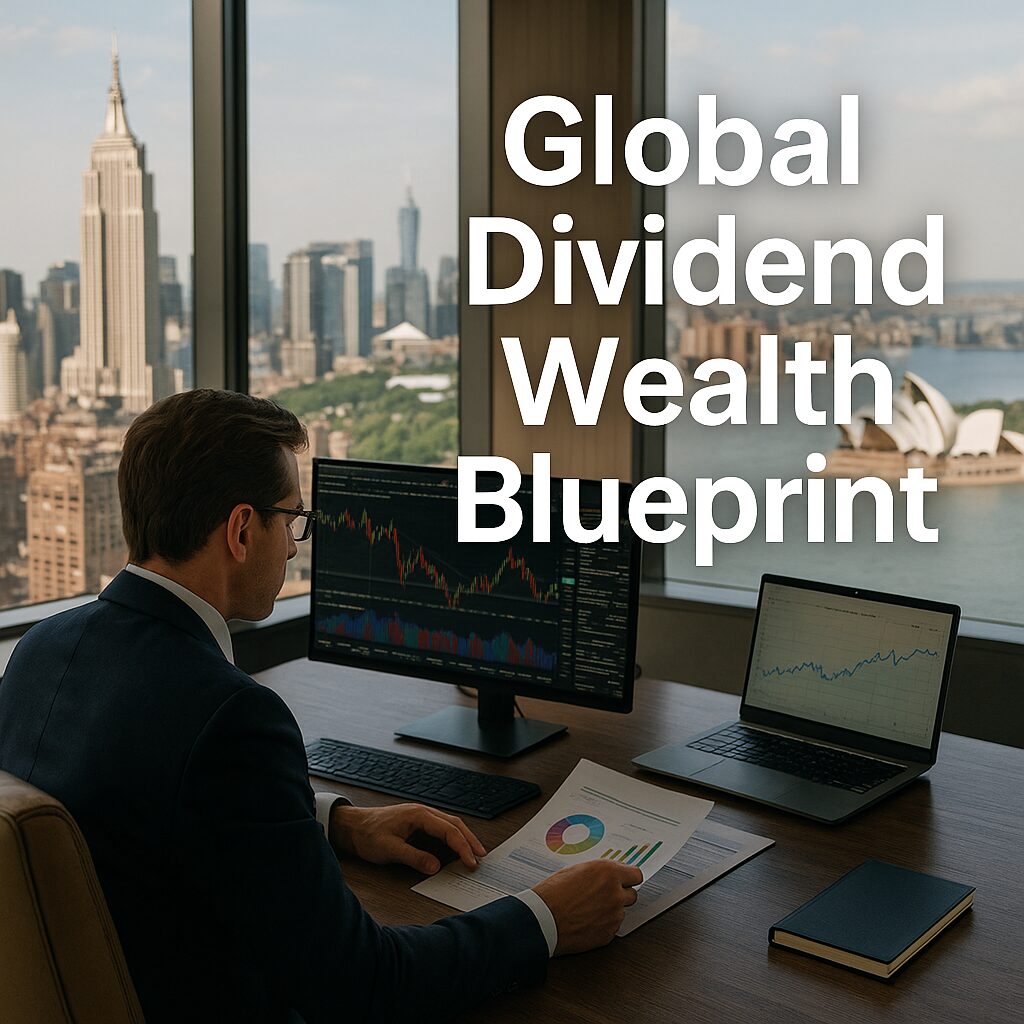Why Global Dividend Investing is the Key to Long-Term Wealth
For global investors and high-net-worth individuals, dividend investing is more than just a way to earn passive income — it’s a proven strategy to grow wealth, protect capital, and benefit from compounding returns over decades.
While the U.S. remains the world’s largest equity market, Singapore and Australia have emerged as dividend powerhouses with attractive yields, investor-friendly tax systems, and stable economic environments.
In this blueprint, we’ll explore how to strategically build a high-yield, globally diversified dividend portfolio that combines the strengths of these three markets.
1. The Power of Dividends in Wealth Building
Dividends are not just cash payouts; they represent a steady income stream backed by the company’s profitability and stability. Over time, reinvesting dividends can significantly boost total returns thanks to compounding.
Historical data from multiple markets shows that dividends account for 30–40% of total stock market returns over the long term.
Why high-net-worth investors prefer dividends:
- Predictable income, even during market volatility.
- Tax efficiency in certain jurisdictions.
- Ability to reinvest for compounding growth.
- Hedge against inflation through dividend growth.
2. Why Choose the US, Singapore, and Australia?
United States – Scale and Stability
- Home to globally dominant companies with consistent dividend growth (e.g., Johnson & Johnson, Procter & Gamble).
- Access to the Dividend Aristocrats list — companies with 25+ years of uninterrupted dividend increases.
- Strong investor protections and transparent reporting standards.
Average dividend yield: 2–3% for blue-chip stocks.
Key sectors: Consumer staples, healthcare, utilities, technology.
Singapore – High Yield and Regional Gateway
- Many companies, particularly Real Estate Investment Trusts (REITs), offer 5–7% dividend yields.
- Strategic position as a financial hub in Asia.
- No capital gains tax and favorable tax treatment for certain dividends.
Key sectors: REITs, banking (DBS, OCBC), telecommunications.
Australia – Dividend-Friendly Tax System
- Known for its franking credits system, which reduces or eliminates double taxation on dividends for local and certain international investors.
- Many companies pay fully franked dividends, making after-tax yields highly attractive.
- Strong resource and banking sectors.
Average dividend yield: 4–6%.
Key sectors: Banking (Commonwealth Bank, Westpac), mining (BHP, Rio Tinto).
3. Structuring Your Global Dividend Portfolio
Step 1 – Allocate Across Regions
- US: 40% – Focus on dividend growth stocks and ETFs.
- Singapore: 30% – Prioritize high-yield REITs and blue-chip financials.
- Australia: 30% – Target fully franked dividend stocks in banks and resources.
Step 2 – Choose Dividend Growth vs. High Yield
- Dividend Growth: U.S. companies with long histories of annual increases.
- High Yield: Singapore REITs and Australian fully franked stocks.
- Balance both to enjoy growth + high cash flow.
Step 3 – Reinvest Dividends for Compounding
Reinvesting dividends instead of withdrawing them can multiply your wealth over time.
For example, a $100,000 portfolio yielding 5% and reinvested annually can grow to over $265,000 in 20 years, assuming no capital gains.
4. Risk Management and Currency Considerations
Currency Risk
Investing across the U.S., Singapore, and Australia exposes you to USD, SGD, and AUD fluctuations.
Hedging tools or holding part of your portfolio in multiple currencies can mitigate this risk.
Economic Cycles
Different economies perform better at different times. Global diversification reduces the impact of a downturn in any single market.
Dividend Cuts
Even strong companies may reduce payouts during crises. Monitoring payout ratios and free cash flow is essential.
5. Tax Optimization for Global Dividend Investors
- U.S.: Be aware of withholding tax rates for non-residents (often 30%, but tax treaties can lower this).
- Singapore: No tax on most dividends for foreign investors.
- Australia: Franking credits can significantly boost after-tax income.
Working with a tax advisor familiar with cross-border investing can help you maximize net returns.
6. Tools and Resources for Managing Your Portfolio
- Bloomberg / Reuters for financial news.
- Morningstar for stock analysis and dividend history.
- Interactive Brokers / Saxo Bank for multi-market trading.
- Portfolio Visualizer to backtest allocation strategies.
Conclusion: Building Your Global Dividend Wealth Machine
A well-structured portfolio across the U.S., Singapore, and Australia combines the strengths of stable dividend growth, high yields, and tax efficiency.
By carefully selecting stocks, balancing regions, and reinvesting dividends, investors can create a self-sustaining wealth engine that generates income for decades — regardless of market conditions.
Your journey to Super Dollar Rich status starts with a single decision: to own assets that pay you consistently and grow in value over time.
